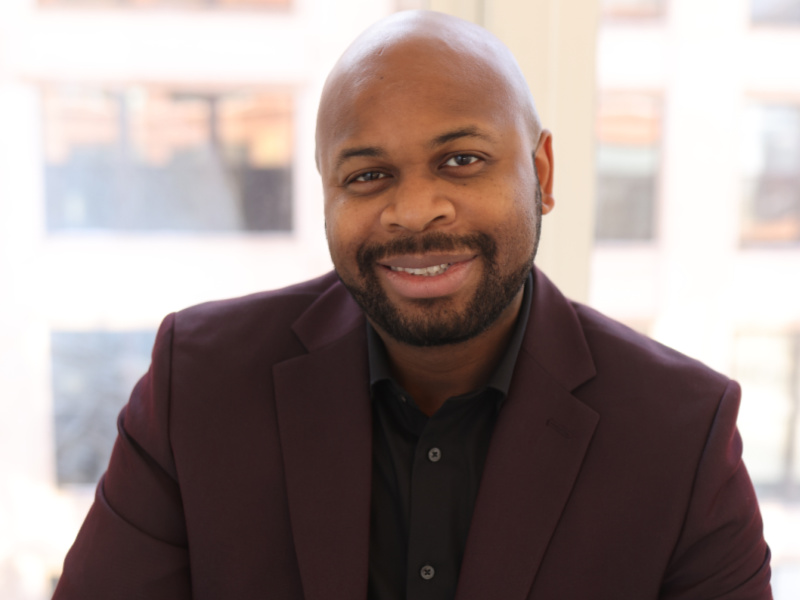Bradley Akubuiro 02 Mar 2022 // 8:31PM GMT

World events over the past two years have changed almost every corner of our lives, and the corporate C-Suite is no exception. Now more than ever before, business leaders are straying outside of their comfort zones as they are forced to navigate and take positions on thorny societal issues. After being met with the lightning rod represented by the killing of George Floyd and the events of January 6, both during a global pandemic, the dynamic of corporate leadership teams has been left irrevocably changed.
CEOs are increasingly looking for a single leader on their teams to turn to for guidance – leaders with an informed point of view who can help counsel them credibly and holistically on how to maneuver these matters both internally and externally.
This shift is evidenced by the emergence of the chief impact officer (sometimes also called chief corporate affairs officer), which typically manages functions including communications, government affairs, and corporate giving. Already, these positions can be found at companies ranging from Walmart (Dan Bartlett) and McDonald’s (Katie Fallon) to Uber (Jill Hazelbaker) and Amazon (Jay Carney), to Pfizer (Sally Susman) and Stanley Black & Decker (Shannon Lapierre).
Chief communications officers are well-positioned to meet the moment, but in cases where consolidated impact organizations are being formally created, communications leaders may not be the obvious choice to ascend. Failure to crack that code may result in getting passed up for these positions, or worse: being layered over in organizations, effectively losing the seat at the table that CCOs have worked so hard over the past several years to obtain.
To increase their odds, comms leaders need to make a handful of key adjustments to the way they operate, starting now:
1. More comms leaders — not just those focused on public affairs — will need to be up-to-speed on policy and integrated with government relations. It can’t just be that senior comms and GR leaders sit at the same tables, but their respective teams need to be in meetings together and comms needs to be up on the driving trends in policy, particularly where they have the potential to ignite employee passions, capture investor interest, or accelerate/impede progress in the marketplace. Communicators will need to become better versed in policy if they want to contend for the broad consigliere roles that CEOs so desperately need.
2. As comms leaders are elevated to more senior strategic positions, they will need to demonstrate increased specialization in topics beyond comms. Looking at the discipline of media — whether earned or paid — there has been a proliferation of outlets on every different type of topic. For example, if a person is only interested in emerging technology, there are over a dozen top-tier publications they can subscribe to and consume virtually nothing else (Wired, TechCrunch, Protocol, Axios Future, The Verge, etc.). It’s no longer enough for a communications professional to say they know media relations. Instead, they now need to know tech media — who the pubs are, who the players are, how to engage each, and to come with relationships.
And while this has been true for a while now by industry category — healthcare, defense, entertainment, etc. — what’s changing is that that level of specialized knowledge is becoming increasingly necessary in sustainability/ESG, workplace & culture, DEI, financial, consumer, and more as well.
3. Comms leaders will need to align on effective metrics to drive reputation health. Let’s assume C-Suites are finally ready to embrace reputation as a strategic imperative independent of direct sales impact. Comms recommendations will still need a firmer grounding in the metrics that matter to reputation beyond just reach/impressions, which are overused in the space and tell us very little.
Metrics like awareness, share of voice, message pull through, sentiment, etc. however, have real implications for reputation and depending on the objective, can be effective tools in determining the efficacy of the company efforts. For example, when trying to advocate for a federal legislative priority, are potentially supportive members of congress beginning to use the language you’re using to put the issue in context on the House floor? Are the influencers who they listen to? Is your brand being cited most often as one who is “getting it right” on the issue you care about, or is your competitor?
These three steps will be a significant shift for communications leaders but have the potential to position them as strategic, thoughtful, and forward-looking — exactly the qualities CEOs are looking for in their counselors for this next wave.
The trends we’re seeing today will have a major impact on the future of the communications function in the near term. As potentially disruptive as they may be, they serve as an incredible opportunity for communicators who are willing to rise to the challenge.
Bradley Akubuiro is a partner at Bully Pulpit Interactive, where he leads corporate communications and DEI. He previously served as Boeing's chief spokesperson and head of global media relations.



































.jpg)

















